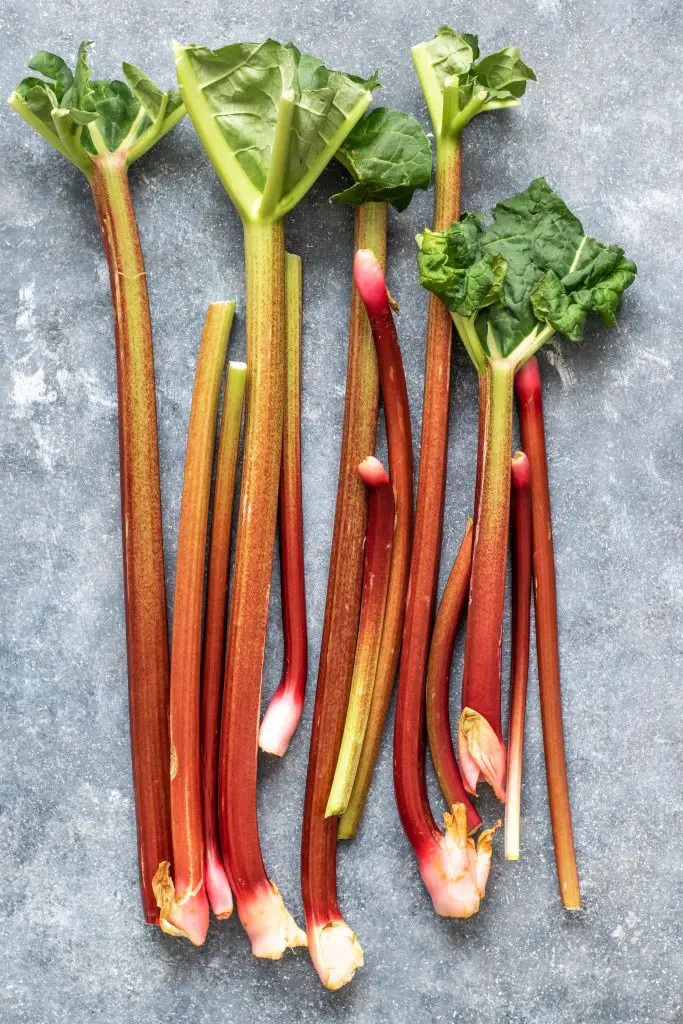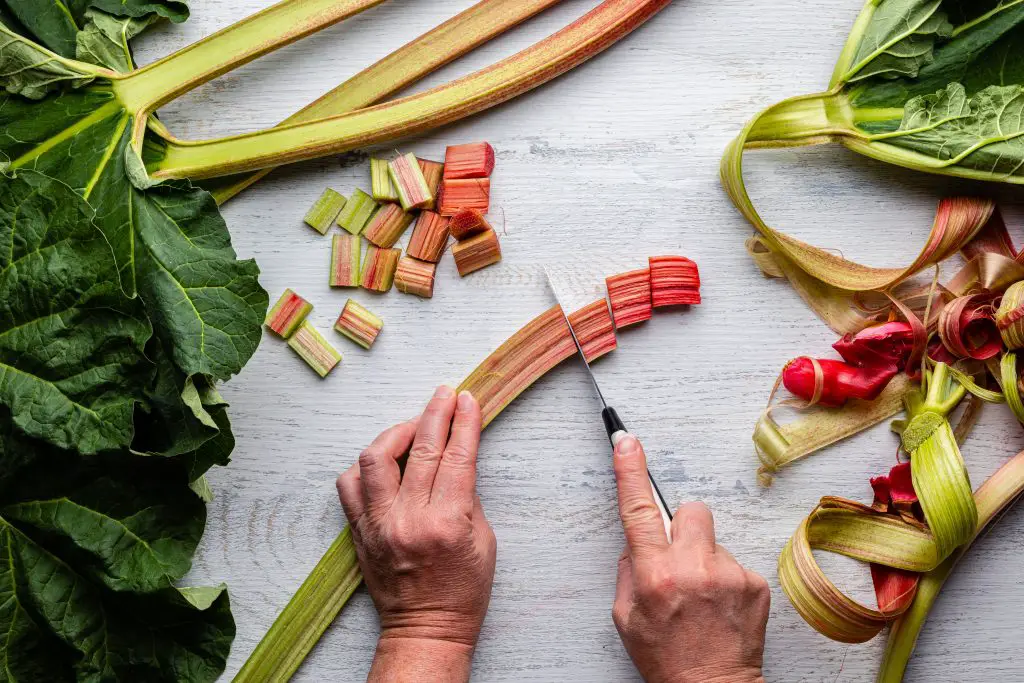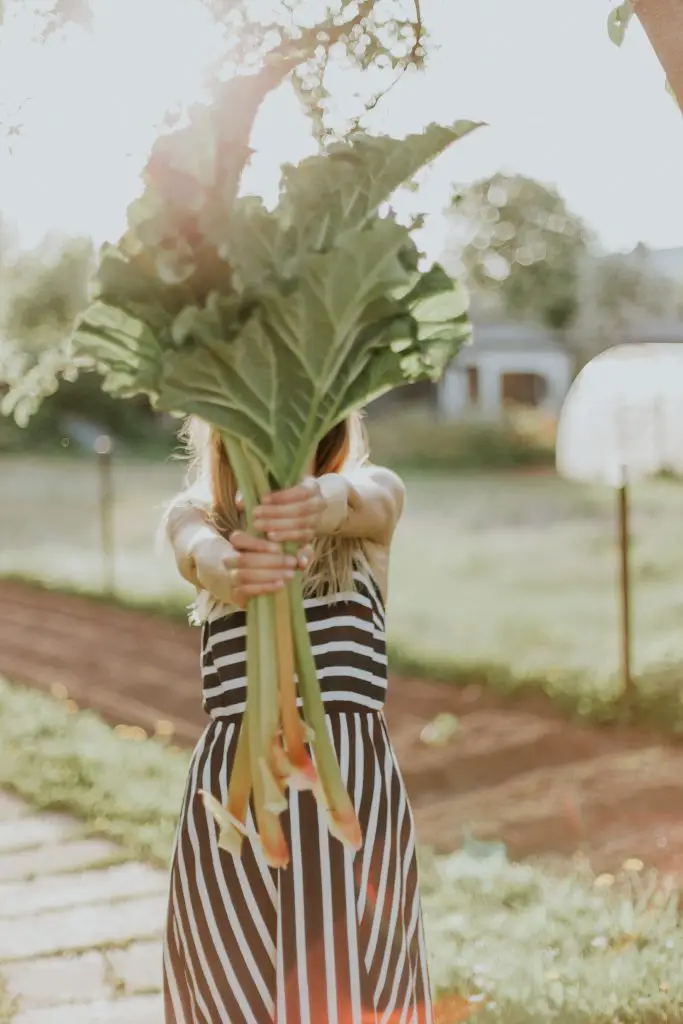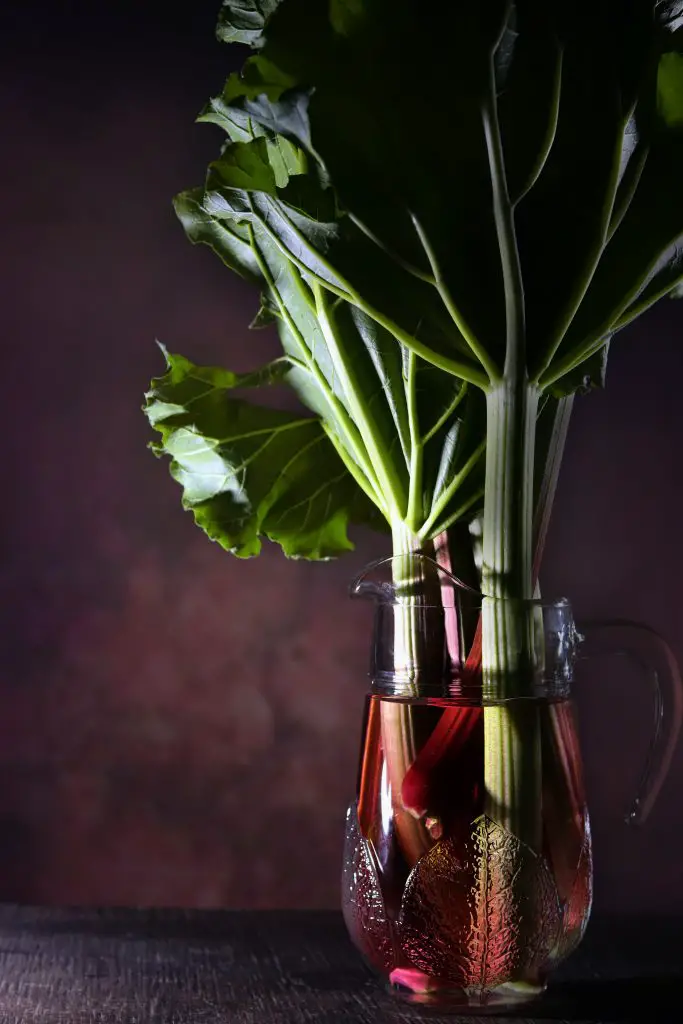Can You Eat Rhubarb After It Flowers? Rhubarb is an extremely popular plant to grow in both ornamental and productive gardens in many regions around the world. It produces delicious storks that can be used to make desserts, however, one of the most common questions that is asked is can you still harvest the stalks after the rhubarb flowers?
Once the rhubarb plant flowers it will greatly reduce the volume of stalks produced, however, those that are already there can still be harvested and their flavor will not be affected significantly by the production of a flower stalk.
The reason why rhubarb plants yield tends to be reduced is that the plant will start to focus on the production of flowers and seeds rather than producing storks which will impact the volume of rhubarb that you do get.

Should The Rhubarb Flower Be Removed From The Plant?
It is entirely optional whether you remove the flower stalk from the plant or not. As mentioned above the main disadvantage of leaving the flower stalk on the plant is that it will reduce the yield. However, the key advantage of leaving the flowers on is that you can allow them to mature and produce seeds that can be used to propagate the plant.
The majority of gardeners that grow their own rhubarb generally do not grow rhubarb from seed and instead propagate the plant periodically by division every couple of years. So in most cases, the majority of gardeners will remove the flower stalk even though it is not absolutely necessary.
About Rhubarb
Rhubarb is a perennial planting vegetable plant that can be grown either for ornamental or edible purposes though it is much more common for the plant to be grown for it’s edible stalks which are commonly used in things such as sauces and jams.
The plant produces crowns that can survive in relatively difficult conditions and are hardy in zones 3 to 9 in most cases. In colder regions, the plant will die back completely and reappear the following year but in warmer locations, the plants can continue to grow year-round producing crops even in winter.
The plants typically grow 2 to 4 ft high and can grow either in full sun or part shade and will perform best when grown in moist but free draining soils that have plenty of nutrients. In the ideal conditions, you will typically see that the clumping perennial will get progressively wider over a number of years.

However, over time this will result in there being dead spots in the middle of the plant which are a good sign that the plant is ready to be divided. In most cases, this should be done every 4 to 5 years to reinvigorate the plants.
It is important to note that while the stalks are edible the leaves themselves of the plant are highly toxic and so contain oxalic acid which is poisonous.
When Is The Best Time To Harvest The Rhubarb?
The best time to harvest rhubarb is generally when the plant is producing stalks consistently in late spring through early summer. At this point, the stalks are at their youngest and most tender which means that they are most prized within the kitchen.
The plants can be harvested in most regions all the way into Autumn, however, generally, the production of stalks has slowed down by this time of year which means that most are the stalks on the plant will be relatively old and will be a little tougher.

Is Green Or Red Rhubarb Better?
Red rhubarb is the variety is traditionally the variety that is grown most commonly in gardens. However, there is not a great deal of difference in the flavor of green and red varieties though red stalks are said more tender because they have marginally higher sugar content.
However, in most dishes, a marginally higher sugar content is of little benefit because the rhubarb plants are generally quite tart and most recipes call for large amounts of sugar which largely negates any significant difference in the flavor.
What Is The Best Time To Propagate Rhubarb?
Rhubarb can be propagated by either root division or seeds. If you want to propagate rhubarb the best time to do it is typically towards the end of the season into mid-autumn. This time of year is preferable because it reduces the effect on the yield that you get from the plants in a given season. But, at the same time allows the divided plants to become established before the worst of the winter weather hits.
To propagate your rhubarb plant, divide the root ball into smaller sections and plant them in pots. Keep them moist until they establish a strong new root system. If you’d like to propagate rhubarb with seeds, it is a significantly slower process because the seeds themselves take a long time to ripen and the process of growing the plants from seed is also significantly slower.

Typically, you need to wait approximately 6 months or more for the seed to ripen, and then to establish a plant from seed it will typically take another 4 to 5 months for a crown of the Rhubarb to become established which means that you can typically not expect to get a harvest until the second year after you have planted the seeds.
Whereas the following year after the plant has been propagated by division you can expect a plant to produce stalks for eating.
What Happens If You Don’t Harvest The Rhubarb Stalks?
In the spring and summer, if you don’t harvest the rhubarb stalks as they mature, they will become too tough to eat. Typically what happens as the plant approaches winter is that many of the unharvested stalks will begin to die back.
When this is about to happen it is common to see the stalks developing a copper-like color in some cases before the leaves on the stalk begin to dieback. If there is excessive amounts of spent stalks coming from the plant that have died back it can cause a few problems.
Firstly leaving decayed vegetation around the crown can increase the risk of disease problems though this does not always happen. The other significant problem is that the presence of decayed stalks can also get in the road of the new developing stalks and reduce the yield which can become problematic for the plant over a period of time.
However, generally speaking, rhubarb plants are pretty tough and resilient plants that will keep going even if they are completely neglected.
I hope you found this article useful and you have great success growing your rhubarb at home at your place. If you have any additional comments or questions please leave them in the section below.
Relevant Articles
Can You Grow Rhubarb From Stalks?
How Much Does A Rhubarb Plant Yield Per Year?
Does Rhubarb Spread? Is It Invasive?
Is Swiss Chard And Rhubarb The Same Thing? How Do You Tell The Difference?
